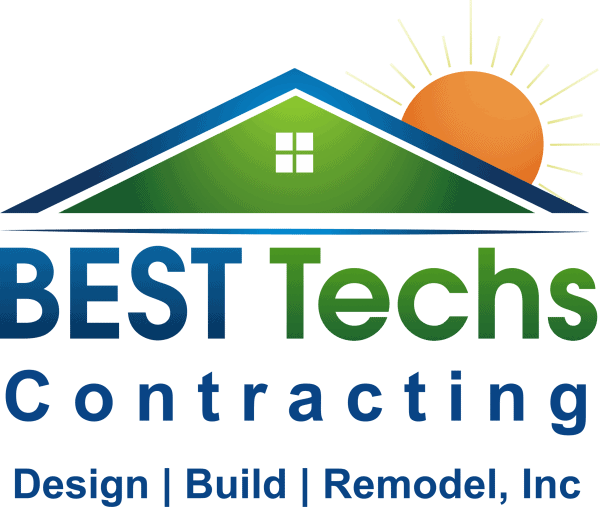When it comes to building design, Passive House (or Passivhaus) standards are often celebrated for their unparalleled energy efficiency and sustainability. However, a lesser known, yet equally important benefit of Passive House construction is its potential for enhanced fire resilience. In a time when wildfires and extreme weather events are becoming more frequent, understanding how Passive House principles contribute to fire safety is crucial.
What Is a Passive House?
Passive House is a building standard focused on creating ultra-efficient, comfortable, and environmentally friendly structures. These buildings achieve high levels of energy efficiency through a combination of advanced insulation, airtight construction, high-performance windows, and mechanical ventilation systems with heat recovery. While these features are primarily aimed at reducing energy consumption, they also play a significant role in improving a building’s fire-resistance capabilities.
Key Features of Passive House Buildings That Enhance Fire Resilience
- High-Performance Insulation Materials Passive House buildings use advanced insulation materials that are carefully selected not only for their thermal properties but also for their fire resistance. Many of these materials, such as mineral wool or dense-packed cellulose, are non-combustible or have a high resistance to ignition, providing an extra layer of protection during a fire.
- Airtight Construction Airtightness is a cornerstone of Passive House design. By minimizing gaps and leaks, Passive House buildings are better sealed against the ingress of smoke and flames in the event of a fire. This airtight barrier can delay the spread of fire and toxic fumes, buying valuable time for occupants to evacuate safely.
- High-Quality Windows and Doors The triple-glazed, low-emissivity windows and insulated doors used in Passive House construction are not only energy-efficient but also designed to withstand extreme conditions. These windows often include fire-resistant frames and glazing that can help prevent the spread of fire from the outside to the interior.
- Ventilation Systems with Fire Dampers Mechanical ventilation systems in Passive House buildings often include fire dampers, which automatically close in the event of a fire to prevent the spread of smoke through the ductwork. Additionally, the controlled air exchange helps maintain indoor air quality and limits the introduction of external smoke during wildfire events.
- Durable and Non-Combustible Exterior Materials Many Passive House projects incorporate non-combustible or fire-resistant cladding and roofing materials. These materials reduce the risk of ignition from embers during wildfires, a critical feature in fire-prone areas.
The Wildfire Context
Wildfires are an increasing concern in many parts of the world, and homes in wildfire-prone regions must be built to withstand these threats. Passive House buildings, with their combination of airtightness, fire-resistant materials, and advanced systems, are inherently more resilient to the challenges posed by wildfires.
For instance, during a wildfire, embers carried by wind can ignite flammable materials on or near a home. The non-combustible materials and airtight construction of Passive House buildings make them less susceptible to such ignition sources. Moreover, the advanced insulation and airtight seals, limit the risk of internal combustion, protecting both the structure and its occupants.
Additional Benefits
The fire-resilience features of Passive House buildings are part of a holistic approach to safety and sustainability. By reducing energy consumption, these buildings also lower greenhouse gas emissions, addressing one of the root causes of climate change—a key driver of increasing wildfire intensity and frequency.
Conclusion
Passive House buildings are not only a smart choice for energy efficiency and comfort, but also offer significant advantages in fire resilience. With their use of fire-resistant materials, airtight construction, and advanced systems, Passive Houses provide a safer and more sustainable solution for homeowners, particularly in fire-prone areas. As we face the dual challenges of climate change and increasing wildfire risks, investing in Passive House design is a forward-thinking step toward a safer and more resilient future.
Cost Comparison: Passive House vs. Traditional Code-Built Homes
One of the most common questions about Passive House construction is its cost compared to traditional code-built homes. While upfront costs for Passive House buildings are generally higher, they offer significant long-term savings and value.
- Upfront Costs
- Traditional Code-Built Homes: Generally, traditional homes are less expensive to build upfront due to the use of standard construction techniques and materials.
- Passive House Homes: Passive House construction requires higher-quality materials, advanced insulation, and meticulous attention to detail, often increasing upfront costs by 5-20% compared to traditional homes.
- Energy Savings
- Traditional Code-Built Homes: These homes typically have higher energy demands, resulting in higher utility bills over time.
- Passive House Homes: Due to their ultra-efficiency, Passive House buildings consume up to 90% less heating and cooling energy, leading to substantial savings on energy bills.
- Maintenance and Durability
- Traditional Code-Built Homes: These homes may require more frequent repairs and maintenance due to the use of standard-grade materials.
- Passive House Homes: Built with durable and high-performance materials, Passive House buildings often have lower maintenance costs and longer lifespans.
- Resale Value
- Traditional Code-Built Homes: Their resale value is largely dependent on market trends and location.
- Passive House Homes: These homes tend to command a premium in the market due to their energy efficiency, comfort, and sustainability features. Plus they will become the standard in building codes in the near future.
- Health and Comfort
- Traditional Code-Built Homes: Standard homes may have issues with drafts, inconsistent temperatures, and poor indoor air quality.
- Passive House Homes: These buildings provide superior indoor air quality, consistent temperatures, and enhanced comfort, offering added value for homeowners.
Conclusion
While the initial investment for a Passive House may be higher than a traditional code-built home, the long-term benefits—including improved health, comfort, durability, and energy savings,—make it a worthwhile consideration. Moreover, as energy prices rise and environmental regulations tighten, the cost gap between traditional and Passive House construction is expected to narrow, making Passive House an increasingly attractive option for homeowners seeking sustainability and resilience.

